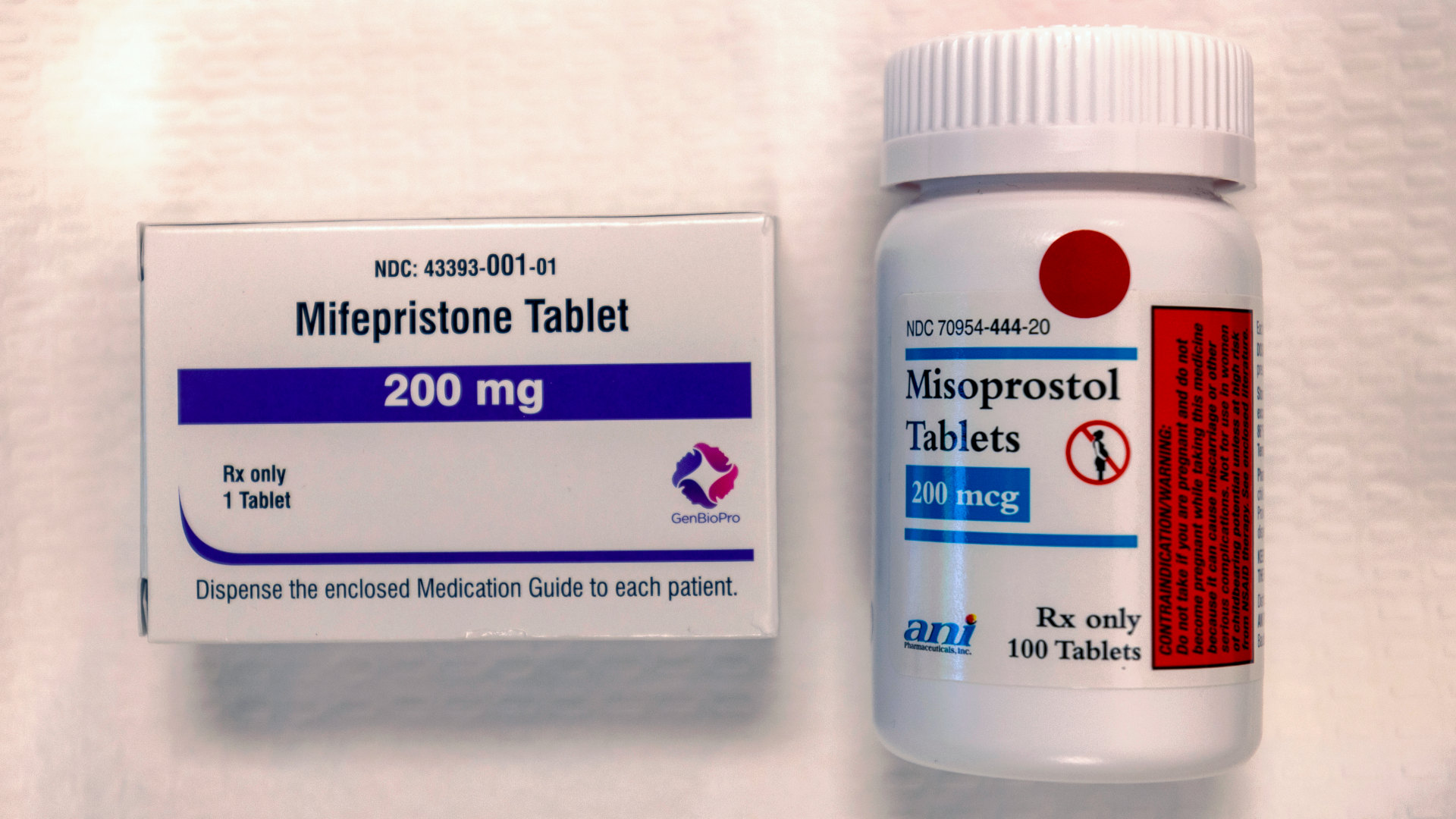Nearly four years ago, I learned that there was fetal tissue stuck in my cervix. It had been there for nine days.
This news came a few weeks after an ultrasound confirmed an eight-week pregnancy but failed to detect a fetal heartbeat, meaning I was experiencing a miscarriage. To help expel the tissue, my doctor prescribed the drug misoprostol, and that night, I inserted the four white hexagonal pills and spent the next 12 hours writhing in pain.
Misoprostol is often prescribed to address miscarriages like mine, and it’s also the second drug in a two-drug regimen that can be prescribed to abort a pregnancy. In 2024, the Supreme Court preserved access to mifepristone, the first drug in that regimen, but the decision was based on narrow procedural grounds. Additional challenges to mifepristone are currently being litigated.
While federal access remains, other efforts to restrict abortion pills abound. States with total abortion bans necessarily restrict the pills, and some ban their use for abortion via telehealth. Louisiana has gone a step further and classified mifepristone and misoprostol as controlled substances, criminalizing possession of either drug without a prescription.
And at least one anti-abortion group, Students for Life of America, is trying to use environmental laws to block access. Last month, The New York Times reported that senior officials at the Environmental Protection Agency directed scientists to look into developing methods to detect mifepristone in wastewater. The request appeared to be in response to a letter from 25 Congressional Republicans, and, according to The Times, organized with help from SFLA.
There is a real connection between environmental contamination and reproductive harm, but that’s not what anti-abortion advocates are pursuing.
I know a thing or two about wastewater: I’ve been an environmental lawyer and clean water advocate for over a decade. I know wastewater is rife with underregulated industrial chemicals, and thousands of facilities illegally dump pollutants into surface waters every year. I know that two-thirds of polluting industries have not had their wastewater regulations updated in more than 30 years. I know that poor people and people of color are more likely to live close to facilities releasing a toxic stew of wastewater, and communities with larger populations of color are less likely to get federal funding for infrastructure upgrades and clean-up.
There is a real connection between environmental contamination and reproductive harm, but that’s not what anti-abortion advocates are pursuing. Pregnant people and children in communities with higher chemical exposures face an outsized risk of adverse reproductive and developmental effects. Nevertheless, President Donald Trump’s administration has shuttered the EPA office tasked with serving “so-called ‘environmental justice’” communities.
The Congressional request to the EPA regarding the wastewater research is the latest action in a years-long campaign by SFLA to weaponize environmental laws against medication abortion. In November 2022, SFLA filed a petition with the FDA asking the agency to require doctors who prescribe mifepristone to provide medical waste bags to patients and dispose of the aborted fetal tissue as medical waste.
Passing a pregnancy, in my experience, is long, painful, and messy. Tissue can be hard to find and identify, especially in early pregnancy. As my body miscarried after the misoprostol, I doubled over as stabbing pain seared across my midsection. Hot blood gushed between my legs as my uterus violently squeezed and contracted. I fished black, gummy blood clots that looked like tar out of my toilet and watched them disintegrate between my fingers, with no sign of the spongy pink tissue that would confirm my pregnancy was over.
The SFLA petition would force other pregnant people to sift through their own bodily waste like I did and return it to their doctors, adding a layer of humiliation to an already physically and emotionally painful experience. Although the FDA rejected the SFLA’s bagged waste petition in January 2025, the group has petitioned the FDA seven more times, often focusing on the environmental impacts of mifepristone. One of those was also rejected, and a recent petition, filed in October, is again about bagged waste and targets a newly approved generic version of mifepristone. And several states, including Arizona, Idaho, Maine, West Virginia, and Wyoming have introduced bills this year that would require patients to collect and return their expelled fetal tissue as medical waste.
SFLA also filed a brief in 2024 in the case of U.S. Food and Drug Administration v. Alliance for Hippocratic Medicine, arguing without evidence that mifepristone threatens endangered species. In February of that year, SFLA asked the EPA to require drinking water monitoring for mifepristone. In some communications, SFLA dubbed mifepristone a “forever chemical,” co-opting language used to describe per- and polyfluoroalkyl substances. PFAS are a family of environmentally persistent, bioaccumulative chemicals that are toxic in very low amounts and linked to serious health conditions including cancer, immune harms, and reproductive harms. And while there is growing concern over wastewater contamination from widely used pharmaceuticals such as anti-inflammatory drugs, antibiotics, and analgesics, there is no evidence that mifepristone and other abortifacients are present in wastewater systems or that such presence would pose risks.
This feigned concern for the environment is a thinly veiled assault on abortion access, the latest innovation in the movement to strip women of their bodily autonomy after the Supreme Court overturned Roe v. Wade in 2022.
If so-called pro-life advocates were concerned about the environment, they’d advocate fixing the significant flaws in our wastewater regulations. If they wanted to protect children and mothers, they’d champion the communities that already shoulder the brunt of chemical exposures. Instead, the government is firing scientists, slashing resources, and rolling back regulations — including for PFAS, which will only put our wastewater more at risk.
The SFLA petition would force other pregnant people to sift through their own bodily waste like I did and return it to their doctors, adding a layer of humiliation to an already physically and emotionally painful experience.
Thirteen days after I took misoprostol, a follow up ultrasound revealed that the pills hadn’t yet expelled any of the fetal tissue or other retained products of conception — an uncommon but possible outcome. Later that night, though, I suddenly doubled over in pain again as I passed more blood clots.
At the time, I didn’t know that the fetal tissue had lodged in my cervix. After spending more than a week anxiously waiting for the miscarriage to be complete, I found the tissue during a home exam with a speculum and hand mirror — something I had learned to do when trying to conceive. My doctor ultimately confirmed what I had found after doing a pelvic exam and did bag and dispose of the tissue.
My experience exemplifies both the absurd and the cruel nature of SFLA’s crusade. No one should have to train themselves to use a speculum to hunt down missing tissue. Doctors shouldn’t be afraid to prescribe misoprostol and mifepristone. I’m grateful I had the choice to take misoprostol, even though it caused painful contractions, and ultimately, it didn’t work for me. Having choices was the only thing that made my miscarriage easier. It gave me agency over my body when I otherwise had very little control.
Lawmakers should devote energy to strengthening our outdated wastewater laws and funding the agencies tasked with implementing them, instead of using those laws as cover for an anti-abortion agenda.
Melanie Benesh is vice president of government affairs for the Environmental Working Group, where she provides legislative and regulatory analysis of federal food, cosmetics, farm, and chemical law. The views expressed in this piece are her own.











